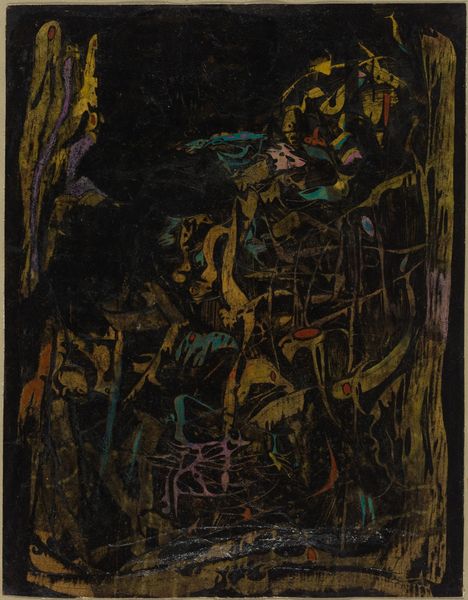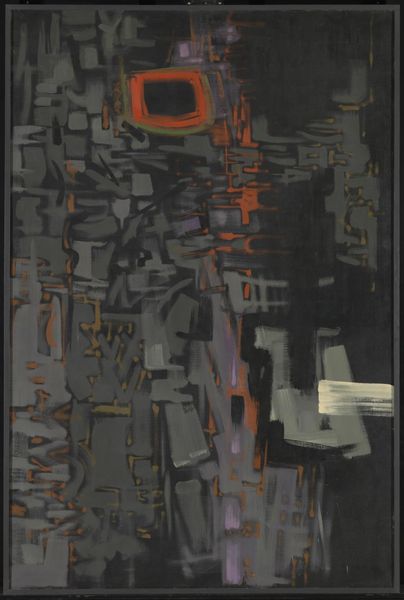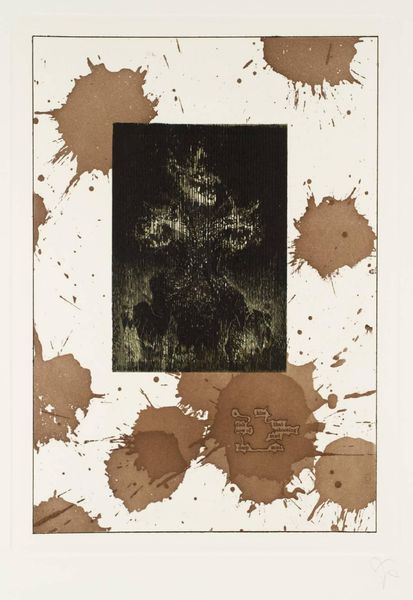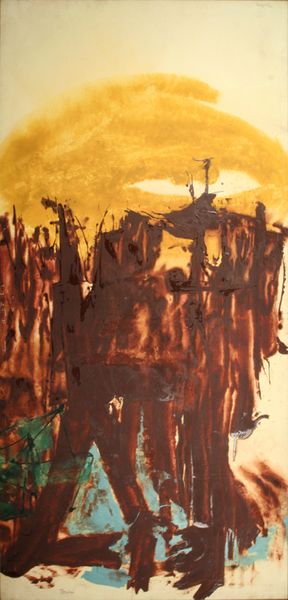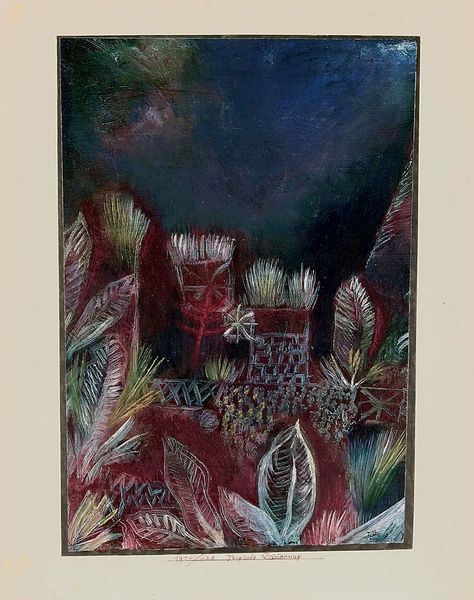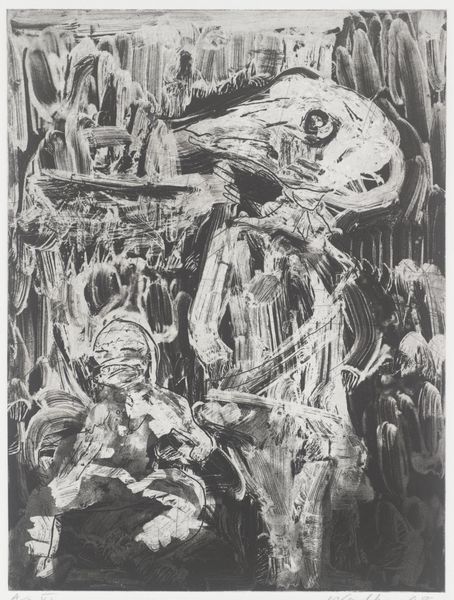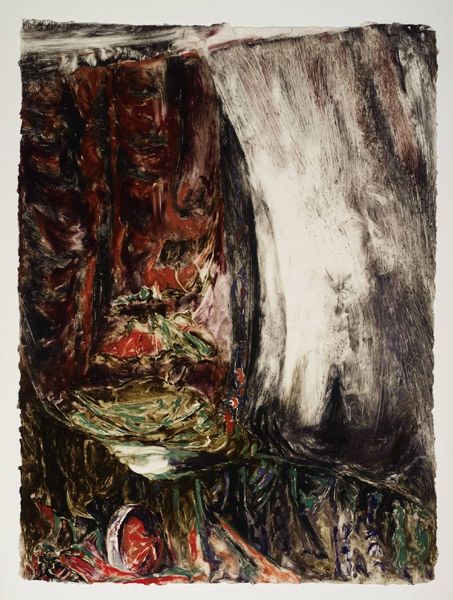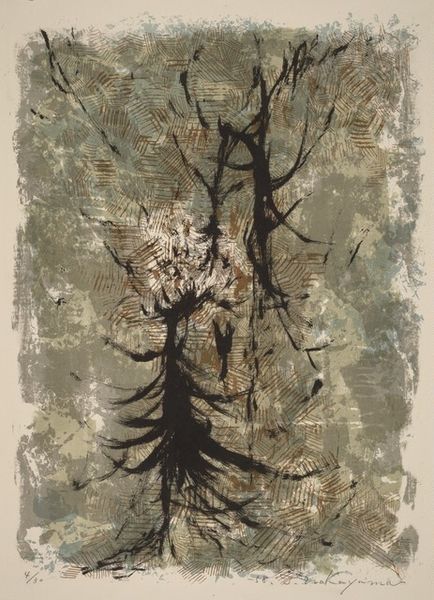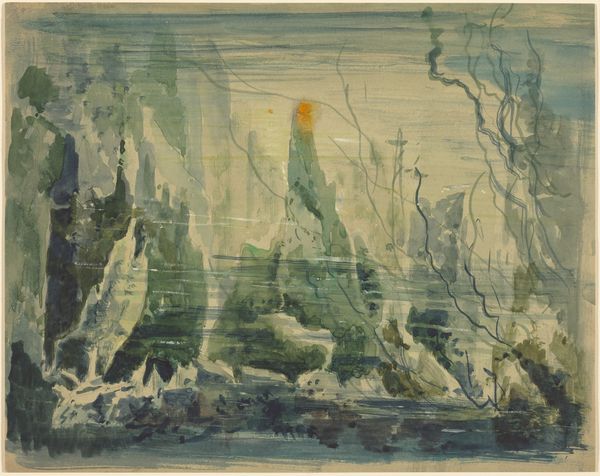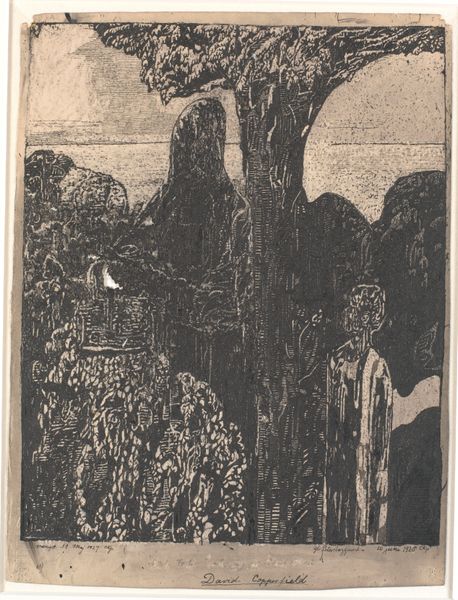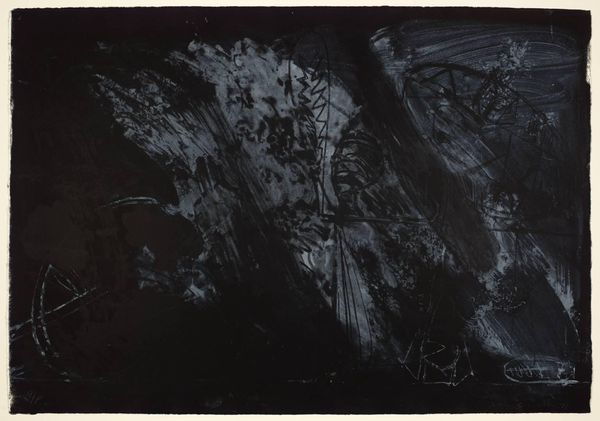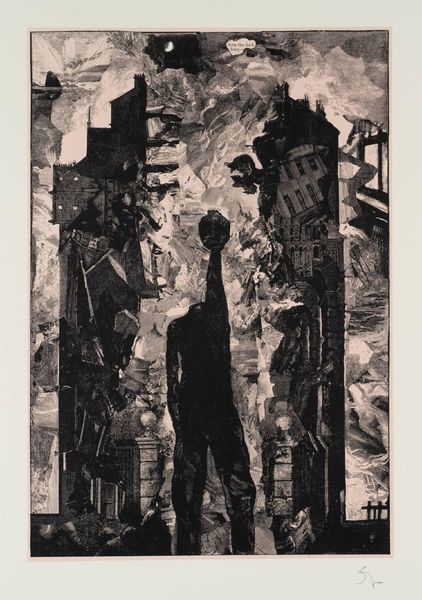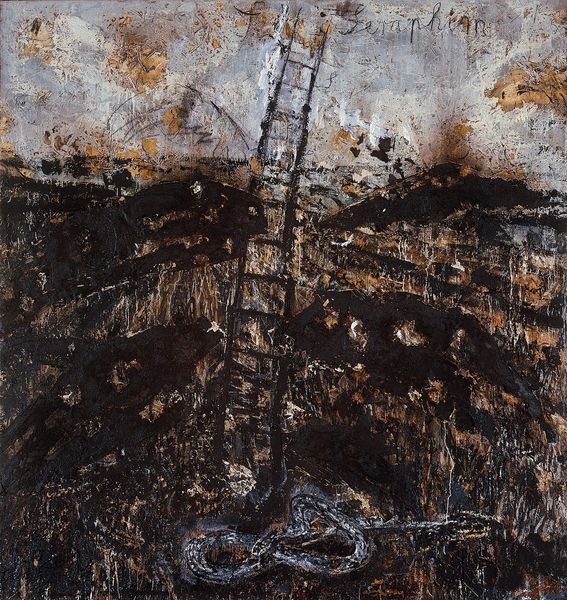
Dimensions: support: 1003 x 813 mm frame: 1200 x 1012 x 66 mm
Copyright: © ADAGP, Paris and DACS, London 2014 | CC-BY-NC-ND 4.0 DEED, Photo: Tate
Curator: This is Max Ernst's "Forest and Dove," currently held in the Tate Collections. Editor: The painting is quite striking, almost oppressive. The heavy, dark forest looms over a small, caged bird, evoking a sense of confinement. Curator: Ernst often used such imagery to explore themes of war and personal trauma, particularly his experiences during the World Wars. The forest, a recurring motif, symbolizes the dark, unconscious forces at play. Editor: The texture is fascinating. The way Ernst applied the paint creates this almost tactile sense of bark and roughage. The dove, rendered so simply, is a stark contrast to the complexity surrounding it. Curator: Precisely. Consider the socio-political climate post-WWI, the rise of fascism—Ernst, along with other artists, sought to express the anxieties and disillusionment of the time. Editor: The starkness of the bird against the oppressive dark is compelling. It's a poignant symbol that creates a visual tension that remains long after you've turned away. Curator: Indeed, and reflecting on Ernst's life and the historical context, we can appreciate its continued power.
Comments
Join the conversation
Join millions of artists and users on Artera today and experience the ultimate creative platform.
tate 6 months ago
⋮
Forests appear frequently in Ernst’s works and recall his feelings of the ‘enchantment and terror’ of the woods near his childhood home. Forests are a potent symbol in German tradition, and were also adopted by the Surrealist group as a metaphor for the imagination. In this work, a small dove, which Ernst liked to use as a symbol to represent himself, is trapped among menacing trees. The shapes are created using a technique he called ‘grattage’, in which paint is scraped across the canvas to reveal the imprint of objects placed beneath. Gallery label, September 2013
